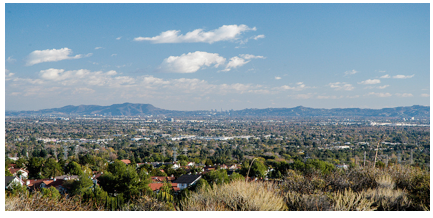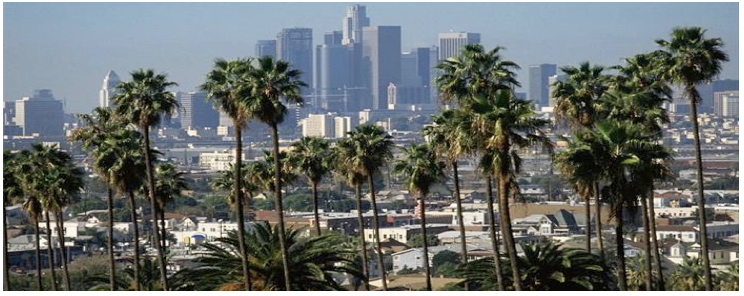WHO WE ARE-There was a special election for school board this month – voter turn-out was eight percent. That’s even worse than the last big citywide election, the 2013 mayor’s race, when turnout was less than a quarter of voters. A week after the school board election, the LA City Ethics Commission recommended lottery-style cash prizes to those who vote to get more people to the polls – has it really come to that?
And, in the midst of what could be a 500-year drought, a lack of cohesion and a plethora of competing jurisdictions have made it very difficult for Southern California to get a handle on its watershed management challenges – a County-wide storm water proposal crashed and burned last year.
Fundraisers will tell you how tough it is to generate and sustain broad appeal to a diverse range of donors across the region for charities other than the most mediagenic ones.
The other day, a friend asked me why Los Angeles – indeed all of Southern California – has such an "atrophied" civic culture, referring to our underdeveloped politics, civic engagement and philanthropy.
What prompted that question?
The complaints from civic activists have been heard before – that notorious low voter turnout, a lack of interest by much of the local media in politics and government, and the relative lack of philanthropic support in such a large city with a sizeable wealthy population (a recent Calnonprofits report shows that nonprofits in the Bay Area have over three times the assets and revenues per capita than we do).
So, why is this? The reasons go to the very character of our community:
Blame it on Our Youth-LA is a relatively young city, despite being founded in 1781. Up until the end of the First World War, it was not much more than an agricultural hub, a cow town. That changed in the 1920’s, with the arrival of the movie studios, the exploitation of oil, the development of the aircraft (later aerospace and defense) industry, and then the growth of our ports.
So LA, the big city, is less than 100 years old. The lack of an established and broad-based institutional leadership is very much a result of its relative youth. With few exceptions, such as various hospitals and cultural venues, we have not had the roster of “usual suspects” to form a robust philanthropic culture here.
Compare that with New York, which dates to the colonial era, or Chicago and San Francisco, which were urban powerhouses before the Civil War. These cities have had two centuries to develop their civic and social cultures, build the infrastructures and economies holding them together, establish their leading institutions and enrich the families and communities who support them.
We’re Too Spread Out-You know that expression “the whole is greater than the sum of its parts?” Southern California is the opposite of that – we are a collection of distinct communities (“parts”) which don’t pull together very well in a common vision or identity (“the whole”).
 The civic, political, cultural, business and non-profit communities of Southern California are a reflection of the 20th Century environment that we occupy, built by the automobile and reinforced by telecommunications – dispersed, diffused, fragmented and diverse, perceiving little in common.
The civic, political, cultural, business and non-profit communities of Southern California are a reflection of the 20th Century environment that we occupy, built by the automobile and reinforced by telecommunications – dispersed, diffused, fragmented and diverse, perceiving little in common.
This physical separation has made us a city of neighborhoods, only occasionally bridged by common interests, like a sports championship, or disasters, like an earthquake. While there is much good to be said about the distinctiveness of the unique communities in our region, it makes it very difficult for us to do big things to solve regional problems.
From time to time, we have overcome that challenge. A case in point is how we came together to fund public transportation because we all became fed up with traffic, a good model to emulate. The development of a comprehensive transportation system might someday tie us together in a way that has never happened before, too. Then there are organizations like Zócalo, whose multi-venue public affairs lecture series attempts to bridge across communities of interest.
But a big challenge remains our fragmented system of governance. NY’s Mayor de Blasio is the “king” of eight million people; our Mayor Garcetti must share power over a narrow scope of government functions with 15 strong city councilmembers, and together they have jurisdiction over just 40% of the county’s population.
In the end, the nature of our physical environment is the biggest challenge to an overarching civic culture. LA is a network of “villages,” which allows many Southern Californians to have their own distinct and livable neighborhoods within one of the world’s most important cities. And, frankly, many Angelenos prefer that.
“I Vant to be Alone!”-Then there is the issue of our DNA, the values and traditions that gave rise to LA in the first place and continue to motivate many of us. This is a city comprised of individuals who came here to escape something else, to do better by realizing their individuality and achieving their personal goals.
{module [862]}
{module [662]}
We might be talking about a person from an impoverished village in northern Mexico or the Philippines, or a conservative small town in the South, or a stifling ethnic enclave in a big northeastern city – all people who came here to do their own thing and get away from oppression and stagnation. Community interests often take a back seat to personal ambitions. It makes LA one of the most dynamic, interesting, entrepreneurial and creative places in America.
Doing your own thing is a libertarian and individualistic approach to life. The communitarian values that underpin robust civic cultures – an interest in local politics and issues, a commitment to community-based philanthropy and volunteerism, a desire to work with your neighbors, and deference to an established order – are less developed here than in more traditional environments. The cost of such creativity has often been isolation, apathy and lack of social cohesion.
That’s changing as more Angelenos are native born, and becoming second and third-generation residents (it was in 2010 that, for the first time since the Gold Rush, a majority of Californians were born here). With more of a familial and historical connection to a place, there is greater interest in making it better for yourself and your descendants. You care a lot more about a community if your mother was born there.
Our town has some fundamental characteristics that erect considerable barriers to a more engaged political environment and a more robust philanthropic culture. They cannot be changed overnight by such incremental – and arguably nutty – measures as cash prizes for voting, or looking for more big-name celebrity donors to social service providers.
Community leaders must understand the evolutionary pace of that change, accept and work around the limitations, and embrace the unique attributes of the place we call home.
(Larry Kaplan is a consultant providing advocacy services to nonprofits and an occasional contributor to CityWatch.)
-cw
CityWatch
Vol 12 Issue 73
Pub: Sep 9, 2014





